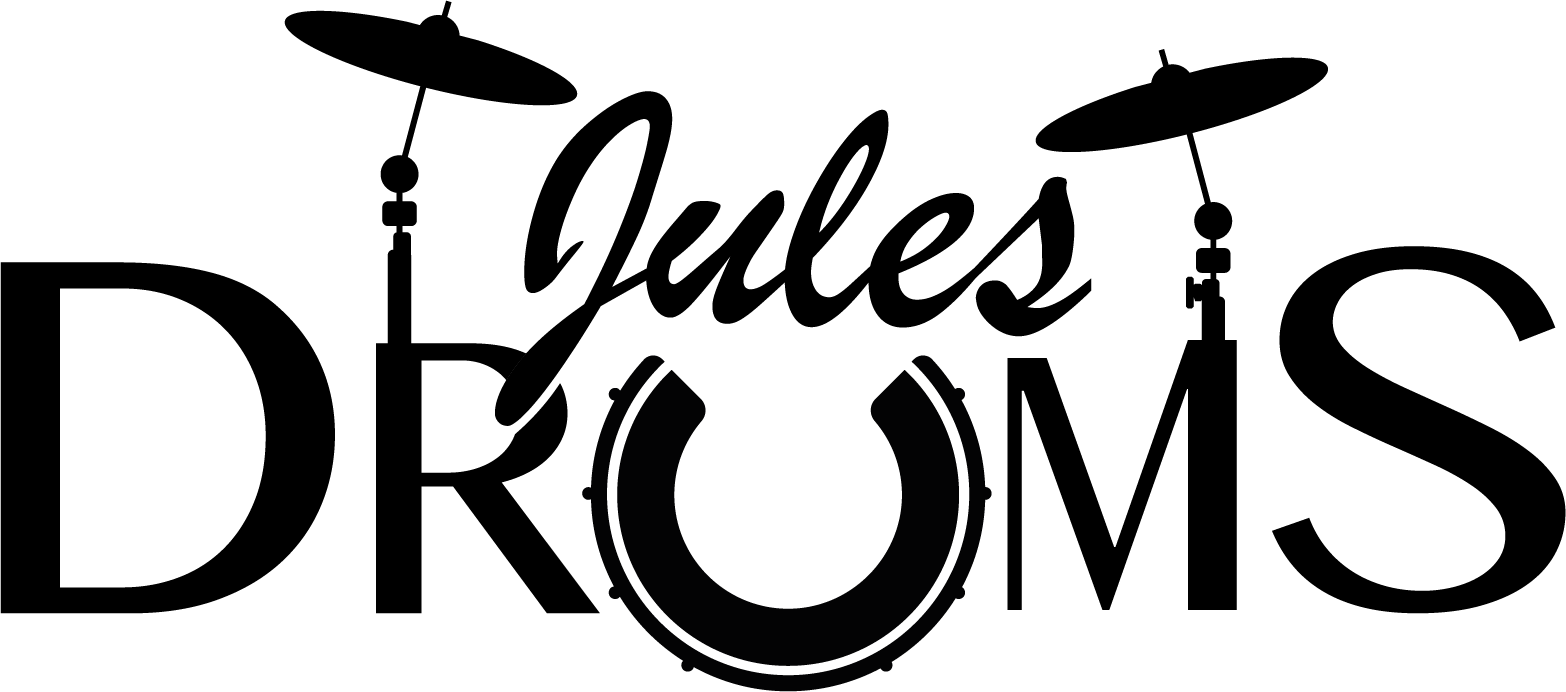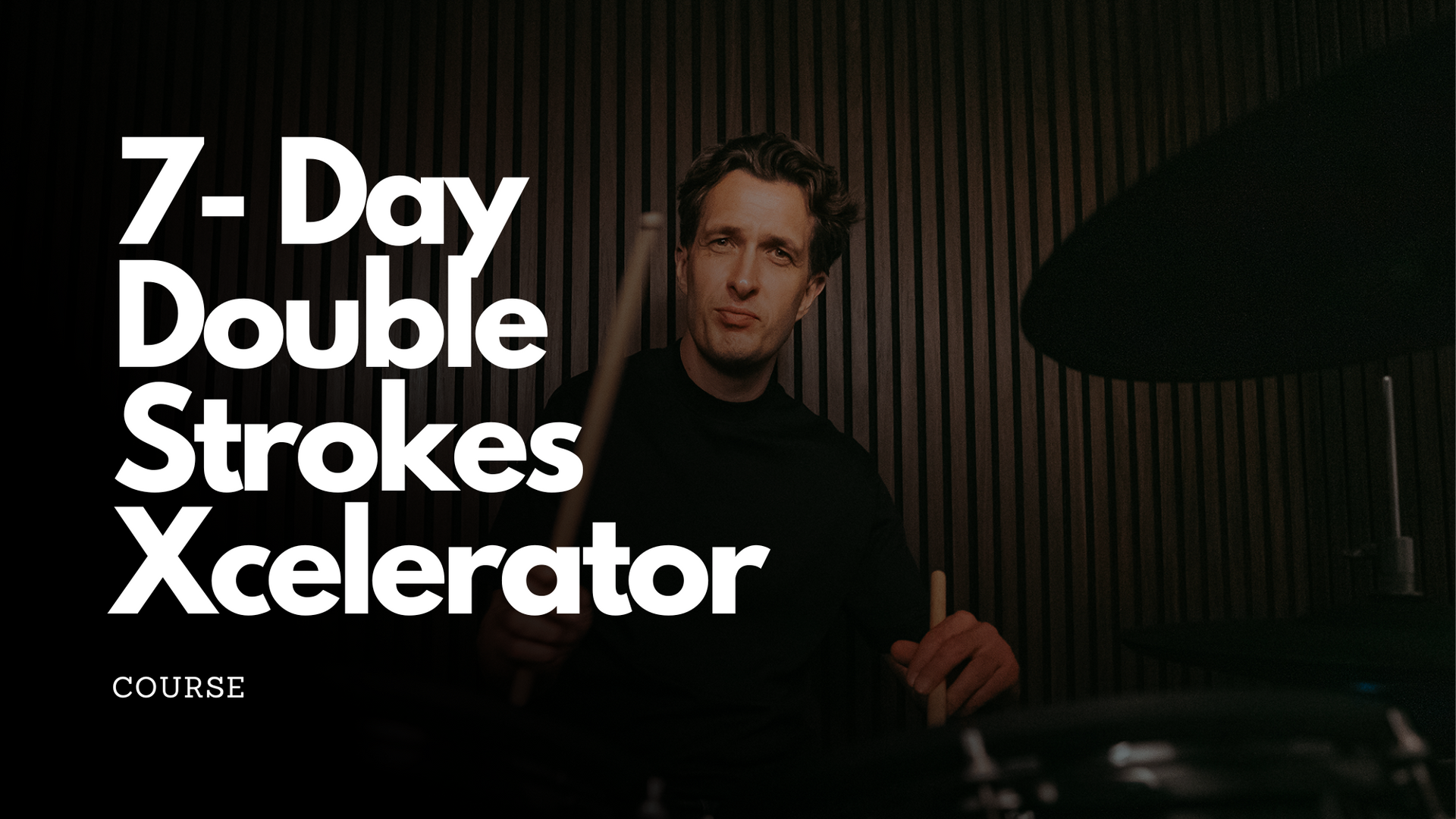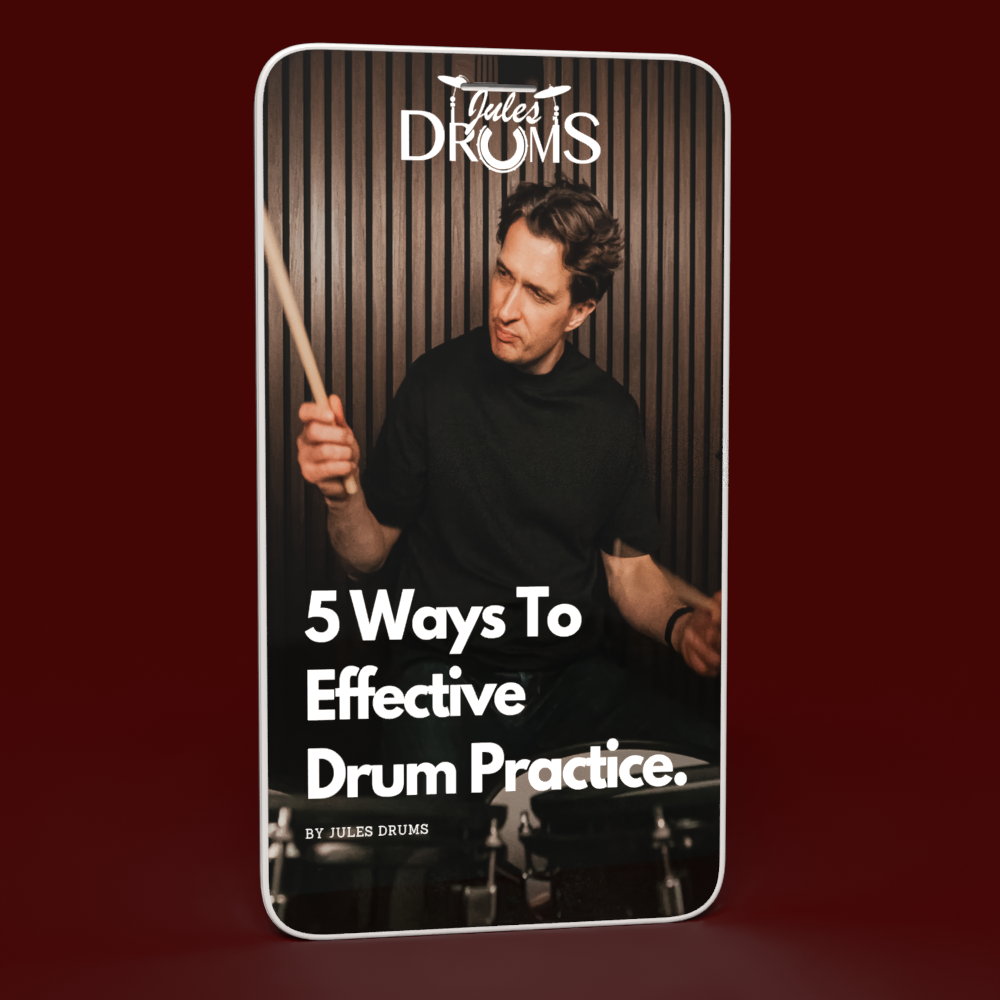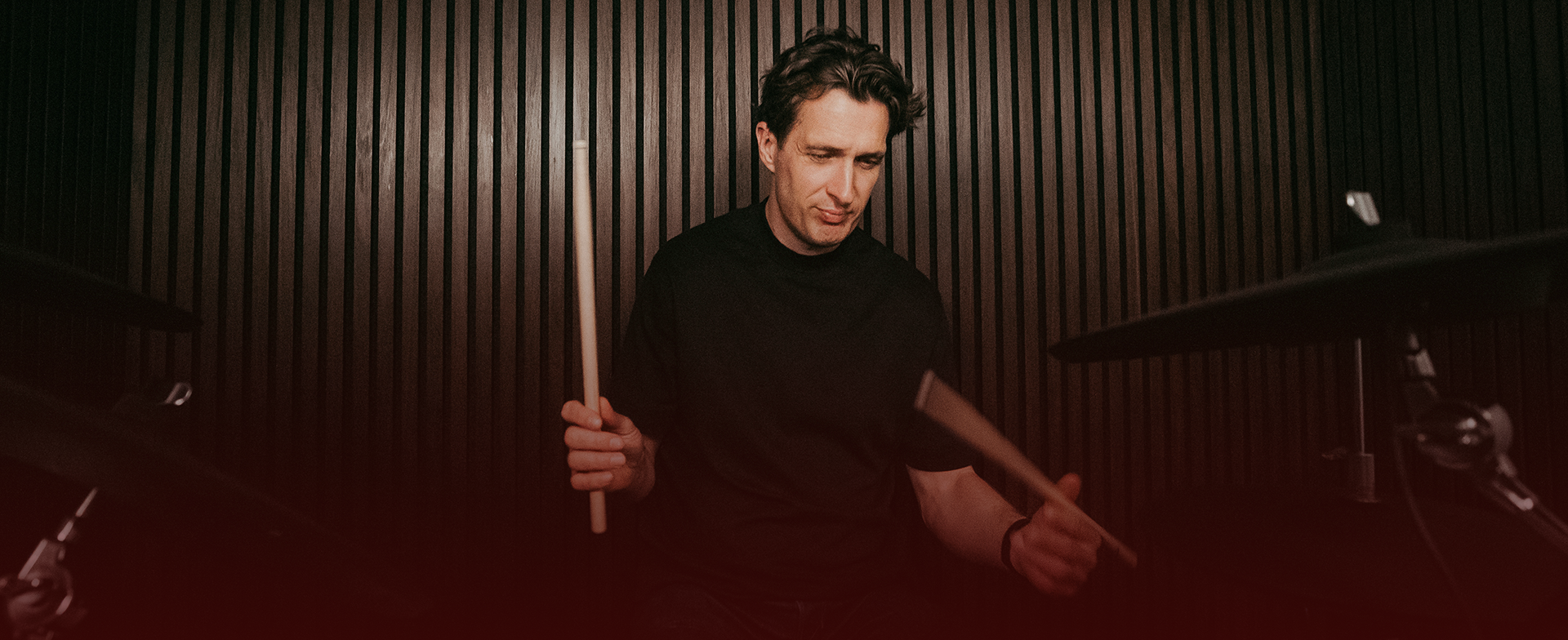"Getting those pesky double strokes up to speed up can be a frustrating endeavour. But with a few tweaks and a bit of practice, you'll soon see progress. Try these 3 tips to get you started."
If you’ve been playing the drums for a short time, or even for a very long time, you’ll have quickly become aware of just how important having a good-sounding double stroke roll is.
Being able to play a double stroke roll with power, precision, and speed is an essential skill for any drummer to master. But why? Well, it’s pretty simple really. Almost everything we play on the drums is made up of single and double strokes, and that’s why. What that means is, without a fast (ish) single or double stroke roll, your top speed will always be limited to your maximum speed of those two rudiments.
"If you’ve ever wondered why you can’t play fast paradiddles, paradiddle diddles, five stroke rolls, etc., the reason will almost certainly be linked to the quality of these two rudiments—especially your doubles."
Putting technique aside for a minute, having the ability to play double strokes quickly is fun and affords us drummers a sense of freedom and creativity on the kit. More importantly, there will come a time when we’re required to play fast within a piece of music, or perhaps a fill or drum solo, and it’s for that reason right there that we should all be making sure that our doubles are in tip-top shape all the time.
So, how can we make sure that our doubles are cutting the mustard and are not the root cause of any rudimentary ruin? You know what’s coming, don’t you? Yep, it’s the P word—practice!
Practicing double strokes can be both frustrating and fruitless if you don’t know how to achieve higher speeds. Not all practice is equal, and not all practice yields results if it’s not done right. Sure, there are endless YouTube videos on this topic (I’ve even made one myself about making the double stroke roll smoother), but the truth is, there is no quick fix, no hack for getting faster doubles. We’ve just gotta put the work in, practicing tried and tested methods to help you get those double strokes up to speed.
Step 1: How to Improve Your Double Strokes
I’ve recently been gifted a workout practice pad made of a moon gel-type material. The non-rebound-y type of gel that makes playing anything faster than about 100 bpm extremely hard work.
Many practice pads offer a rebound that bears no resemblance to an actual drumhead, lulling us into a false sense of achievement. I’ve lost count of the amount of times I’ve worked on something on a pad, reached a good speed, then attempted the same feat on a snare drum only to come crashing down to earth when that very same pair of drumsticks just won’t travel anywhere near as fast on the real thing!
"My point here: Don’t make it easy on yourself. Dennis Chambers used to say that he practiced for years on pillows, and we all know how fast that man can move around a drum kit. No further proof needed."
All jokes aside, one of the best things you can do to get faster double strokes is to practice your doubles on a surface that makes you work, and doesn’t just fling the stick back into your hand at the mere suggestion of a tap stroke. The next time you sit down at your super springy pad, consider placing a folded towel on top, and then see how that top speed’s going.
Step 2: Track Your Progress with a Practice Diary
One of the best things I ever did with my practice was to start keeping a practice diary. There’s really nothing quite like a bit of cold, hard data. Every time I sat down to practice, I would keep a note of the top speed at the end of that day of the particular exercise that I was working on, and a lot of the time, that was double strokes.
I would jot down the date that I began working on my doubles and my current maximum speed. I like to be able to hold any pattern down for one minute before I consider that “in the bag,” as it were. If I could play it for a minute without stopping, then I would up the tempo by 2-5 bpm. This way, you build stamina too, while increasing your power and speed simultaneously.
The next time I sat down to practice, my goal for that session would be to beat the previous day’s top speed, and if I did, in the diary it would go—rinse and repeat.
Try this out, and you’ll be shocked at the speeds you’ll soon be logging in your practice diary, just a few days later. Not to mention the motivational boost you’ll get as you watch your top speed increase before your very eyes. Real progress that you can actually see.
Step 3: Be Consistent – Speed Comes from Repetition
So, with that all said and done, how should we be practicing to help us achieve faster double strokes?
To achieve real noticeable progress with any speed-building exercise, it’s super important to be consistent. Much like going to the gym—go 4 times a week, big muscles; go once, wasting your time. The same logic can be applied to drumming. You’re far better off practicing four or five times a week for 20 minutes than one day for an hour and a half.
It’s the repetition that eventually gives way to progress, so if you want fast results, consistency really is key.
Building double stroke speed requires us to develop stamina, so it’s vitally important that you push yourself in every practice session, even if it’s just 15 minutes long. You must max out those doubles. By max out, I mean at the very least, hit the same top speed that you achieved in your last practice session. Your hands need to feel like they’ve had a workout. If we don’t max out our hands, it means that we’re just living in the “maintenance practice” zone, and progress doesn’t live here—stagnation does.
There’s nothing wrong with maintenance practice (the process of practicing just to keep yourself in shape and at your current level, not progressing). In fact, it’s a wonderful thing, because it means whatever level you reach, you can maintain it fairly easily without hours and hours of daily work. But it’s important to understand the difference between maintenance practice and progressive practice if you’re looking to build double stroke speed.
To build faster double strokes, you need to be pushing for progressive practice in every session, and as I mentioned earlier, always maxing out your hands before you finish that session.
Keeping a practice diary with detailed notes of your progress will help you stay in this zone every time you sit down at the pad, and get you into the mindset that will help you achieve the results you deserve from your practice time.
Go easy on yourself!
Remember that achieving faster double strokes takes time. You might get huge gains one day, and then only be able to meet your previous day’s top speed the next. This is where the practice of consistent progressive practice will reign supreme for you. Don’t be put off by those days when you break your personal best, as the old saying goes, it’s a marathon, not a sprint.
By applying these three simple principles to your double stroke practice, you’ll be well on the way to building incremental, sustainable speed gains that will benefit your playing forever.
Let me know in the comments the tips and tricks you use to get your double strokes faster.
If you’re interested in achieving faster double strokes NOW, my brand new course 7-Day Double Strokes Xcelerator Course is launching soon.
Join me for 7 days of guided, step-by-step workouts, diving into proven speed-building exercises that will transform your doubles, develop your control and precision, and set you up for continued progress long after the course ends.
Tap here to register your interest, secure early bird access, and unlock an exclusive subscriber-only discount at launch!
Jules






